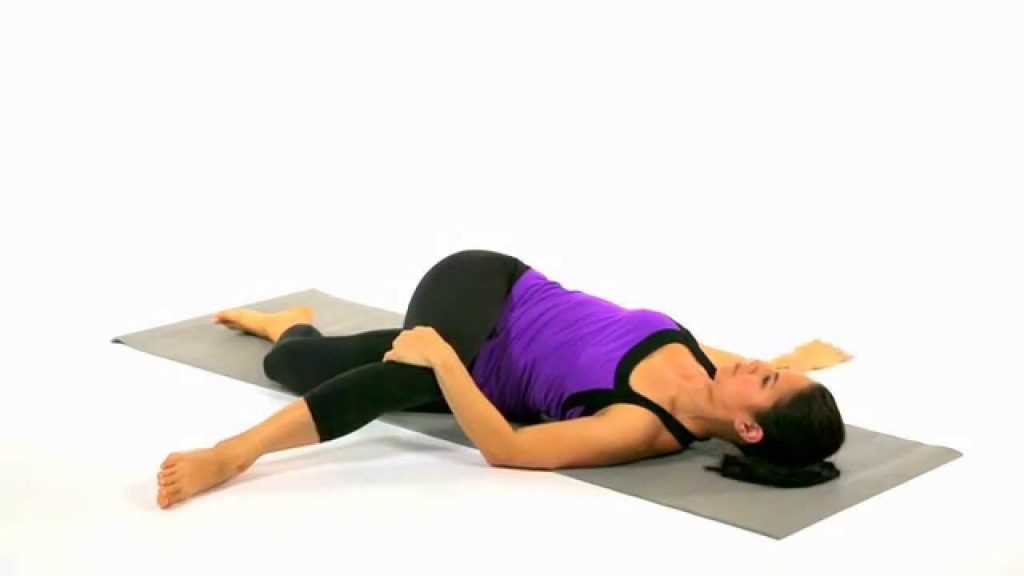The name Supta Matsyendrasana comes from the Sanskrit, “Supta” meaning “Supine”, “Matsyendra” meaning “Lord of the fish”, and “Asana”, meaning “Posture”.
Table of Contents
- Steps with breathing
- Adjustments
- Benefits
- Contra Indications
- Variations

Supta Matsyendrasana Steps with breathing
1. Begin with supine position by lying flat on back with both the legs together and hands besides the hips. Now, bend the right leg and keep the right foot closer to the left knee.
2. Extend both the arms sideways, at the shoulder level, palms facing downwards.
3. Now bring the right foot at the outer edge of the left knee. With exhalation bring the right knee towards the floor and using the left hand, push it more towards the left side and roll the neck towards the right side.
4. Maintain the pose from 30 seconds to a minute without straining and repeat the asana on the other side also.
5. Slowly release the hands and legs and relax in Shavasana.
Adjustments
1. Palms should face downwards in line with shoulders.
2. Foot of the bent knee is in line with the knee of the straightened leg.
3. Bent Knee should be at the hip level.
Variations
1. Catch hold of the shin bone.
2. Interlace the fingers behind the hamstring and extend the bent knee.
Benefits
1. Improves spinal flexibility.
2. Relieves pain and stiffness in the hips and lower back.
3. Improves digestion and detoxifies internal organs.
4. Massages abdominal tissues.
Contraindications
1. This asana should be strictly prohibited by the people with recent internal organ surgeries.
2. People who have limited range of motion in the hip region.
3. Severe lower back problems.
4. Hernia and neck injuries.
